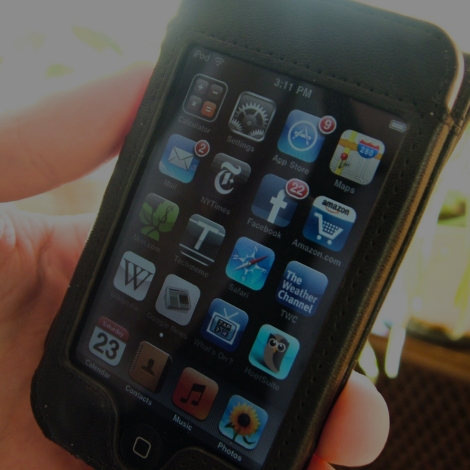
In the case, Blackberry Limited v the Controller of Patents and Design, Blackberry Limited (Blackberry) challenged an impugned order issued against its Indian patent application (application) for an invention relating to enhance user interaction with multimedia devices and autofill media files based on available storage.
The impugned order refused the grant of Blackberry’s application on the ground of “non-patentability” under section 3(k) of the Indian Patents Act, 1970.
The patent application included claims for a method and apparatus for managing content in a device by providing a confidence level for media files, automatically selecting media files based on these levels, and updating a list with information corresponding to the selected media files. The Controller rejected this application on the grounds of non-patentability under section 3(k), citing that these features are non-technical as they do not contribute to any technical effect. Furthermore, the Controller opined that the invention of the subject is only an automatic filling and sorting process implemented on a general purpose computer and an algorithm to execute the said instructions in a pre-defined sequential manner.
Dissatisfied with the Controller’s decision, Blackberry appealed before the erstwhile Intellectual Property Appellate Board (IPAB) in 2020. However, with IPAB’s dissolution in April 2021 and with the enactment of the Tribunals Reforms Act, 2021, the case was transferred to the Delhi High Court (Court).
The Appeal contended that:
- The Controller’s rejection under section 3(k) of the Act was non-tenable as the subject invention addressed a technical problem, i.e., the problem of efficiently managing media content on devices with limited storage capacity and providing a technical effect to download different quantities of content on different devices connected to the same server;
- The Controller copied the conclusions of the European Patent Office (EPO) verbatim, as the impugned order reproduced extracts directly from the EPO’s decision. Thus, illustrating a lack of application of mind while judging the merits of the subject invention, as the EPO’s conclusions are based on a prior art cited for objecting novelty, which has not been relied upon for objecting novelty by the Indian Patent Office; The objection of novelty had already been waived off by the Controller; and
- The technical feature of the invention enables devices to download more music and other media content in real-time through multiple sources, which was not possible prior to this invention, making the technical effect evident. This also led Blackberry to issue proper promotional material highlighting that more music could be downloaded on Blackberry devices.
Based on Blackberry’s contention, the Court analyzed the impugned order and discussed the novelty of the subject invention vis-à-vis the prior art US’765 relied upon by the EPO to object novelty, for the sake of completeness.
Based on the analysis,
- The Court disagreed with the EPO’s analysis that the purpose of the subject invention is merely to select files based on popularity ratings, and that such feature is not linked to a technical task. The court rather analyzed the claimed features and inferred them to be technical in nature as automatically selecting media files based on confidence level and amount of storage medium requires (1) centrally managing and indexing of media by organizing media content from multiple sources into a single unified library file and (2) reducing file size for creation of library files through use of only metadata that helps with efficient transfer and synchronization of media files. Further claimed features of updating a list with information corresponding to selected media files, categorizing the media files and comparing file sizes of the categorized media files with available media storage are also inferred to be technical as implementing these features involves (3) managing cache by dynamically monitoring changes and updating device libraries, (4) providing remote or local access to media based on device capabilities, and (5) enabling unlimited media storage that enhances media accessibility. In view of these technical features performed by the subject invention, the Court thus opined that, the subject invention enhances a device by improving its functionality and efficiency within the same storage space, thus forming a concrete technical effect and contribution. .
- Non-patentability under section 3(k): The Court relied on the discussion in “Terrell on the Law of Patents, 19th Edition (South Asian Edition)” for judging the subject matter eligibility of the suit patent, which emphasizes that the types of technical advantage attributable to computer programs which suffice patentability are:
- Program that solves a problem within the computer itself; and/or
- Effect of the program is not merely within the computer but where the beneficial consequences feed into other devices.
Relying on the above pointers, the Court opined that, the features of the suit patent provide technical effects both within the computer by optimizing storage and retrieval processes, and beyond the computer by enhancing the functioning of mobile devices, improving media accessibility, and rejected the objection under section 3(k). The Court directed Blackberry to characterize the claims of the suit patent with the feature “selection of multimedia files for transfer between storage mediums” from prior art US’765, allowing the application to proceed to grant.
Through this judgment, the Court has emphasized how a computer-related invention’s technical contribution or technical effect should be evaluated while judging subject matter eligibility, which not only provides clearer guidance for patent examination, but also profoundly entrusts and encourages innovators of software-centric innovations.

